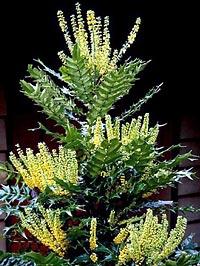Are snowberries poisonous to humans?

Q: I enjoyed your article about planting a hedgerow ("Drawing a Line," Pacific Northwest magazine, Feb. 5) and plan to order at least a few of the plants you mentioned for a corner of my yard. But during my research I discovered that the common snowberry is poisonous to humans. If it's true, I don't want to plant it anywhere my daughter can get it. Are the white berries on common snowberries poisonous?
A: The round, white berries on the common snowberry (Symphoricarpos alba) have saponins in them, which are toxic but poorly absorbed by the body and tend to pass through and cause little harm. Saponins are found in some kinds of beans and other plants we eat regularly.
The general consensus seems to be that a person would need to eat a lot of snowberries to have a toxic effect. But since these berries are so showy and attractive after the leaves fall, you may want to wait to plant snowberries until your daughter is a little older.
Oddly, birds eat snowberries with no ill effects, yet Native Americans used to put large quantities of these berries into streams to kill the fish which can't tolerate them. Local tribes also used snowberries as an external salve to cleanse and heal the skin.
Q: Your story about hedgerows recommended using deciduous plants. I'd like to plant a hedgerow with some evergreens in it for more privacy and green in winter. Would that work? What plants could I use?
A: You can use whatever plants you'd like for hedgerows, even though traditionally they're made up of mostly deciduous natives. Hedgerows aren't created or defined by any specific kind of plant, but rather by the combining of many different shapes and sizes of plants into a dense and living fence.
Good evergreen hedgerows might include mahonias which vary in height from 2 to 3 feet for Mahonia aquifolium 'Compacta' to the statuesque Mahonia x media 'Charity' or 'Lionel Fortescue,' which top out between 6 and 10 feet high.
Mahonias would add yellow winter flowers and shiny, jagged evergreen leaves to your hedgerow. For a lacier look, you could mix in nandina Indian hawthorne (Rhaphiolepsis indica) or osmanthus; both have evergreen foliage and spring flowers. Just stay away from any plant with a rigid, formal shape, for the charm of hedgerows is in the knitting together of plants into a loose and informal tapestry.
Q: I just found a bag of bulbs in my garage that I forgot to plant last fall. I think they're tulips. They seem OK. Can I plant them now?
A: Tulips and most other bulbs need a period of chill for several months, and I hope that we're past it being cold enough to provide that. You can store your bulbs carefully away in a dark, airy and cool place in a ventilated bag (sounds like you've already been doing that just fine) and if they aren't soft and rotten next fall you could try planting them then.
Meanwhile, most nurseries have a great assortment of tulips just poking up out of the ground and ready to plant, so you don't need to do without them this year. Why do we feel this is cheating? I'm going to get past that, and since the squirrels excavated and ate all the tulips I planted last fall, I'm planting nursery-ready tulips in springtime from now on rather than risk winter predation and rot.
Valerie Easton also writes about Plant Life in Sunday's Pacific Northwest Magazine. Write to her at P.O. Box 70, Seattle, WA 98111 or e-mail planttalk@seattletimes.com with your questions. Sorry, no personal replies.